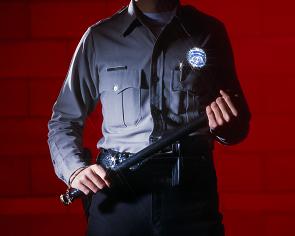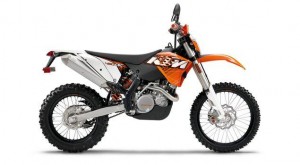Lane splitting is riding your bike between lanes, including maneuvering between lanes of slow or stopped traffic. It’s also called filtering, stripe riding, and white lining.
Laws vary, but generally, lane splitting is not allowed in most areas of the U.S., with the exception of California. Some states do not specifically ban lane splitting, but have other laws in place that effectively condone or forbid it. South Carolina specifically prohibits lane splitting. Motorcycles are entitled to a full lane just as cars are, and motorcycles can travel two abreast in a single lane. Check with law enforcement in your state.
Some of the dangers of lane splitting include . . .
- Car doors opening suddenly, causing loss of control.
- Cars changing lanes without warning or signals.
- Hands, dogs, or objects coming out of windows.
- Drivers of larger vehicles not seeing you.
- Drivers not seeing you at intersections and turning.
If you split lanes, most of these dangers can be avoided by being aware of cars around you, adjusting your speed to conditions, staying out of drivers’ blind spots, wearing bright clothing, and making noise when you’re moving. When you stop, stay in front or behind a car, and always make sure drivers can easily see you. At intersections, always assume a car will turn and stay away from the side. Remember, cars cannot see you as easily as you can see them.
While drivers and law enforcement consider lane splitting dangerous (we do too), proponents of lane splitting say that it reduces rear-end collisions for bikes and reduces traffic congestion. Opponents say it is dangerous and doesn’t offer any real congestion relief because of the low numbers of motorcycles. Unfortunately, in case of accident, riders are often deemed at fault if the crash occurs while lane splitting, even in areas where it’s legal.
Do you split lanes, and why or why not?
Motorcycle recalls beginning in June 2011 are listed below. Manufacturers will notify owners of affected bikes, but if you have not been notified, or if you’re not sure whether your motorcycle is on the recall list, customer service numbers are listed.
Image to the left of a 2011 KTM 450 EXC, taken from KTM.com.
KTM / Husaberg
KTM has recalled over 1,200 KTM and Husaberg motorcycles manufactured from November 2009 through November 2010. Some handlebar clamps were not heat treated correctly, and they can develop cracks that allow the handlebars to move unexpectedly, causing loss of control or a collision.
The following KTM and Husaberg models are affected:
- 2011 Husaberg FS 570
- 2011 Husaberg FE 570S
- 2011 KTM 450 and 530 EXC
- 2010-2011 KTM / 690 ENDURO R
The recall began in June 2011, and owners can contact KTM Customer Service at 1-888-985-6090. Any authorized KTM dealer can replace the defective clamps free of charge.
For more information, contact KTM directly, or click here.
Honda
Honda has recalled over 3,000 model year 2010 and 2011 motorcycles for defective bank angle sensors that could give incorrect readings and cause engine stalling. Affected models include VT750 Shadow and Phantom motorcycles built from June 2009 to March 2011.
Honda will replace defective bank angle sensors, and owners may contact Honda Motorcycle Customer Service at 1-866-784-1870. Reference Honda Safety Recall #R80.
For more information, click here.
Victory
Because of incorrect machining on handlebar risers and clamps, Victory has recalled over 800 Cross Country motorcycles produced from January through April 2011. Polaris, owner of Victory, says the handlebars may slip, causing loss of control.
The recall began in June 2011, and Victory dealers will test and replace the handlebar assemblies of affected motorcycles free of charge. For more information, owners may contact Victory Customer Service at 1-888-704-5290 or click here.
Owners of affected motorcycles, or those with questions about any past or present manufacturer recall, can contact the National Highway Traffic Safety Administration’s Vehicle Safety Hotline at 1-888-327-4236 (TTY 1-800-424-9153), or visit the NHTSA’s website at safercar.gov.
 Charleston loves to celebrate the 4th of July with plenty of fireworks. What could be a more perfect celebration of our independence than spending the day on the beach with friends and family followed by spectacular island fireworks?
Charleston loves to celebrate the 4th of July with plenty of fireworks. What could be a more perfect celebration of our independence than spending the day on the beach with friends and family followed by spectacular island fireworks?
Independence Day events happening in and around Charleston:
Patriot’s Point 4th of July Celebration: America’s National Carrier Aviation Museum draws tens of thousands every July 4 to listen to live bands, eat plenty of good food, and of course, watch the incredible fireworks display launched from the deck of the Yorktown. For 2011, Patriots Point has spent more than ever before on fireworks, so this year’s celebration will top them all. Admission is free for the fireworks, entertainment, and much-loved Kidz Zone.
Directions: Take I-26 to downtown Charleston, turn on Highway 17 North, go across the Cooper River Bridge, and follow the signs to Patriots Point.
Summerville’s Red, White, and Blue on the Green: Downtown Summerville comes alive with its Red, White, and Blue on the Green on Saturday, July 3. Hosted by Summerville D.R.E.A.M. (Downtown Restoration, Enhancement, and Management), the festival includes a dunk tank, face painting, crafts, and for $3, unlimited games. Bad Moon Band will play, and all the usual food vendors will be selling their delicious dishes.
The highlight of the festival is the much-anticipated Uncle Sam and Miss Liberty Costume Contest and non-motorized parade around Hutchinson Square. Everyone joins in with their wagons, bicycles, carriages, kids, animals . . . all decorated to celebrate the 4th of July. Prizes include Best in Show, Uncle Sam, Miss Liberty, and Best Decorated Pet.
For more information, please call the Summerville D.R.E.A.M. office at 843-821-7260.
Directions: Take 1-26 West to Highway 17 South for about 4.5 miles to Hutchinson Square, the center of town.
Folly Beach 4th of July Celebration: Enjoy an amazing fireworks display at Folly Beach at dark. Make it an all-day celebration and fish off the Edwin S. Taylor Fishing Pier, swim or stroll along the beach, or enjoy a delicious meal in one of our restaurants.
Directions: Take I-26 to downtown Charleston and turn on Highway 17 South to Highway 161 (Folly Road). Go to the end of Folly Road (about 15 minutes) to the beach.
What will you be doing for the Fourth of July?
Grab a green beer at a local pub and enjoy the many festivities of St. Patrick’s Day tonight! My personal favorite part about St. Patrick’s Day is the Irish music that can be heard almost everywhere in downtown Charleston during this wonderful day.
And to get you in the spirit for St. Patty’s Day, I’ve grabbed a few of my favorite Irish-inspired photos:
 Image above taken from http://www.flickr.com/photos/jciv/423904070/
Image above taken from http://www.flickr.com/photos/jciv/423904070/
 Image above of Chicago’s river dyed green, taken from http://tympanogram.com/music/st-patricks-day-2010/
Image above of Chicago’s river dyed green, taken from http://tympanogram.com/music/st-patricks-day-2010/
 Image above taken from http://www.costumzee.com/view/2009/03/page/2/
Image above taken from http://www.costumzee.com/view/2009/03/page/2/
Educating yourself about South Carolina law is always a smart idea. When you can speak knowledgeably to a law enforcement officer or state or government official, you’ll find yourself feeling more confident and entitled to your rights.
Below are a few of our favorite resources for researching the law and staying informed about state and federal government:
South Carolina State House website: If you are ever unsure of South Carolina laws, this is a great website to find legislation pertaining to your needs. The site also offers information on the process of legislation process, as well as senate and house information.
United States Courts website: This is an excellent website to use if you’re looking for bankruptcy resources, court records, federal rulemaking, and other elements pertaining to the judicial system.
And, if you ever have to appear in court for catastrophic injuries, criminal defense, or any other suit, it’s a good idea to improve your court literacy and stay in the know.
Find Law website: This website provides a holistic approach to the law and is the perfect place to find everything from legal resources to lawyers in your area, and legal answers to legal forms.
When researching law, always remember that even though you can educate yourself and understand your rights as a citizen, it’s always important to seek out additional legal assistance when needed. For example, if you are ever in an accident, are charged with a DUI, receive unfair treatment in the workplace, or any other serious issue, hiring a lawyer to investigate and use additional resources to ensure you receive full compensation is important.
If you missed part I of this post, feel free to check it out here.
Only Smooth Moves:
Turning a motorcycle on such a slick surface demands an ultra-smooth approach. Getting on the brakes abruptly or making a sudden steering input could put you in the guardrail. So you want to be slowed down before you go in there and keep the throttle neutral all the way through –and be ready for cars that might get unstuck and block the whole mess.
That smooth approach to speed and direction changes will serve you well on all wet roads. Initiate your turns a bit more gradually. Downshift smoothly, engaging the clutch a bit slower than usual, and avoid abrupt throttle changes. Get on the throttle progressively. Use a taller gear to reduce the forces reaching the rear tire. Apply the brakes in such a way that the tires are not loaded abruptly. Allow more space to stop or slow down so that you need less. And also make sure that drivers around you have time to react to your moves.
The Eyes Need It: Though it might look better at the end of a long ride in the wet, a black rainsuit is going to be very hard to see in heavy rain.
**Image to the left taken from Motorcycle Superstore website.
That brings us back to vision. The ability of other drivers to see us could be the single biggest issue a motorcyclist must confront in the rain. With low light, windows obscured, and a streaked and possibly fogged windshield, the driver of a car may have a very difficult time seeing the world ahead. If you are wearing black, or even worse, a neutral color like gray or olive drab, you blend into that gray world. A bright yellow rainsuit is probably the best choice and the single simplest way to make your wet-weather rides safer, though white is also an excellent choice and even better than yellow at night. Fluorescent colors also help during the day and retro-reflective striping or panels on your rainsuit, helmet or a pack also help at night. A visible helmet color also makes a difference at night.
How about your own ability to see? Even with a faceshield that’s wet on both sides, you probably have a better view of the situation around you than the average car operator does in the rain. The drops on a faceshield (or goggles) are inside your focal point and are just vague blurs when you focus on the road ahead. However, your view can be impaired by faceshield fogging or a windshield that rises into your line of sight. Unlike a faceshield, a windshield is well out in your focal range, and the water on both sides makes it hard to see through. Rain-X does help disperse water on both face- and, more importantly, windshields.
Anti-fogging solutions and the Fog City Fog Shield effectively stop fogging, although the Fog Shield is not recommended for use at night because it creates some ghost images. Even if you don’t have a commercial anti-fog solution, a thin layer of hand or dish soap will stop fog. You can wipe it on wet or dry, than polish it off.
A Rainy Night:
For many motorcyclists, the demons come out on a rainy night. Each of those raindrops on your faceshield or goggles picks up a pinpoint of light from every light around you. Riding behind a windshield that is too tall to see over is extremely difficult, which is why we caution against that configuration. Oncoming cars can completely obscure your vision. A timely wipe of your faceshield can help, but you may be unable to see the road at all for a moment. Puddles may be completely undetectable.
On the other hand, lights that aren’t so bright — such as taillights — reflected in the road surface ahead can show you features of the road surface that you headlight doesn’t illuminate. My preferred strategy is to follow (at a distance that keeps me out of its spray) a vehicle with lots of taillights, watching the point where they are reflected to pick out potholes, seams, or objects lying in the road. Watching the vehicle will also warn you of large puddles, which could cause hydroplaning if you hit them fast enough.
Even at night a motorcyclist has a few aces to play. One advantage of a motorcycle is your high view point compared a person in a car. At night, this allows you a better view of the road surface because you have a steeper angle of view. As a result, it’s easier to see striping, and other shallow features. You can also use the reflective qualities of wet surfaces to your advantage. Wet utility wires or tree branches can warn you of a car approaching over a hill or around a corner. Brake lights reflected under a truck can alert you of an impending stop.
Did you find these bad weather motorcycle safety tips helpful? We’d love to hear from you in our comments section.
 News stories have been circulating online for the past few days regarding Federal Officials wanting to standardize helmet laws in all states. The National Transportation Safety Board wants to approach all states that lack a mandatory helmet law to enact one for every motorcycle rider and passenger on the road.
News stories have been circulating online for the past few days regarding Federal Officials wanting to standardize helmet laws in all states. The National Transportation Safety Board wants to approach all states that lack a mandatory helmet law to enact one for every motorcycle rider and passenger on the road.
South Carolina law SECTION 56-5-3660 states that “Helmets shall be worn by operators and passengers under age twenty-one; helmet design; list of approved helmets.
It shall be unlawful for any person under the age of twenty-one to operate or ride upon a two-wheeled motorized vehicle unless he wears a protective helmet of a type approved by the Department of Public Safety. Such a helmet must be equipped with either a neck or chin strap and be reflectorized on both sides thereof. The department is hereby authorized to adopt and amend regulations covering the types of helmets and the specifications therefor and to establish and maintain a list of approved helmets which meet the specifications as established hereunder.”
According to an article in the Post & Courier, “The (National Transportation Safety Board) said there were 4,400 motorcycle deaths in the U.S. last year, more than in all aviation, rail, marine and pipeline accidents combined. Head injuries are the leading cause of death in motorcycle crashes.” (read the full Post & Courier article here).
If the National Transportation Safety Board were to enforce the mandatory helmet law, it would mean that South Carolina helmet law would change to require all motorcyclists and their passengers to wear helmets—no matter their age.
What is your opinion on federal mandated helmet laws?
On November 11, 1918, fighting in World War I ended when an armistice was established between Germany and allied nations. Since this day signified the end of the war, we now honor our veterans on November 11 every year and praise them for their courage and devotion.
At Uricchio Law Firm, we would like to thank all of our veterans who have fought for this great nation and we honor them for their immense bravery.
Post written by Mandi, Uricchio Law Firm’s legal assistant
Lowcountry riders have the luxury of mild winters, generally free from freezing temperatures and cold weather hazards such as black-ice, but don’t underestimate the powerful effect that the wind can have on your ride.
Windchill can turn an enjoyable motorcycle ride into a highly uncomfortable one.
To protect yourself consider the following tips:
- Add a windshield to your motorcycle for the winter months.
- Wear a motorcycle helmet that provides some face and neck protection.
- Purchase motorcycle gloves with pre-curved fingers, which allow you to comfortably squeeze the throttle.
In the cold months, the best way to keep warm on your motorcycle ride is to be well-insulated. Try dressing in layers. The bottom layer should always be some type of snug fitting thermal or fleece article of clothing. Number of layers and types of fabrics will depend on the person and the outside temperature, but remember the layering should not affect your mobility.
Find out more motorcycle tips. Sign up for the Biker’s Law RSS feed.






